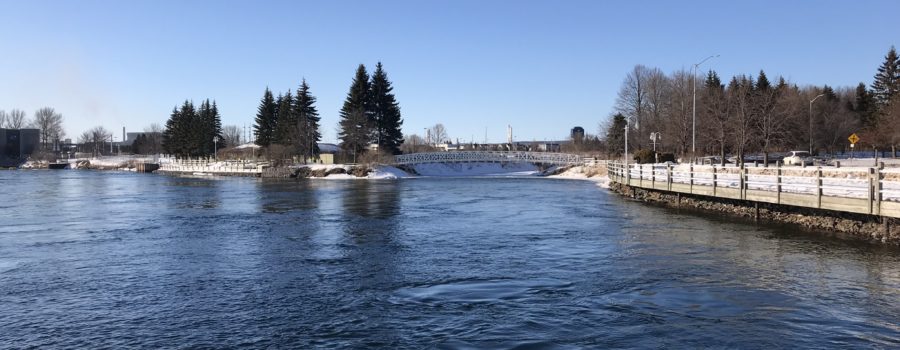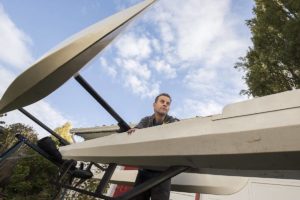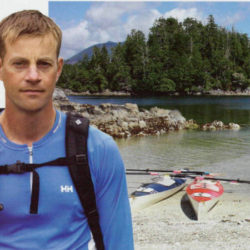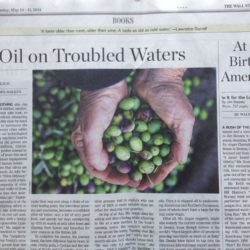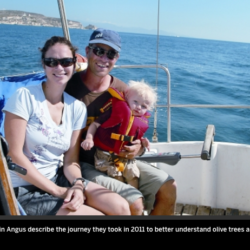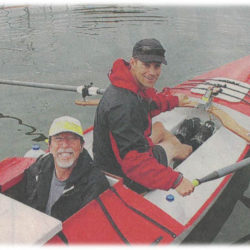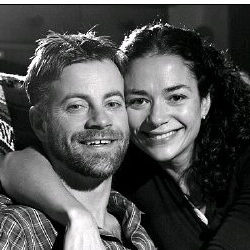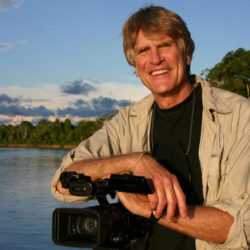 On the weekend I spoke at a Leadership Conference in Sault Ste. Marie. Many of us on the west coast have never heard of Sault Ste. Marie, but I grew up in Ontario and had a vague notion of where it was: somewhere north. Well it’s not even that far north, but for many Ontarians it was far enough from Toronto to be considered remote and from my lotus land vantage, anything that got snow was the arctic. So I packed my parka, left the blooming daffodils of Victoria and flew east.
On the weekend I spoke at a Leadership Conference in Sault Ste. Marie. Many of us on the west coast have never heard of Sault Ste. Marie, but I grew up in Ontario and had a vague notion of where it was: somewhere north. Well it’s not even that far north, but for many Ontarians it was far enough from Toronto to be considered remote and from my lotus land vantage, anything that got snow was the arctic. So I packed my parka, left the blooming daffodils of Victoria and flew east.
On the shores of Lake Superior, some 700 km Northwest of Toronto, sits Sault Saint Marie, or the Sault (pronounced so that it rhymes with blue) as locals call it. It was once a key crossroad in the fur trade route and the mighty St. Mary River Rapids powers a hydroelectric dam that fostered other industries. Remnants of that history line the river and a snowy boardwalk guides you past them. An old passenger ship sits in the iced over marina, converted into a museum. Further along is the historic canal and lock that was first built in 1798 to bypass the rapids and nearby sits a 120-year-old brick pulp and paper mill that has been converted into hip restaurant and theatre. It was here, in the Machine Shop, that Algoma University held their leadership conference and I found myself meeting a remarkable group of people
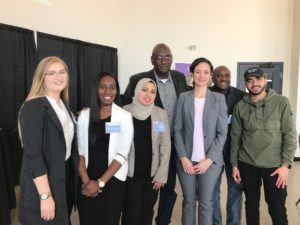 Algoma University has some 1600 students, most study here in the Sault but others were in their Timmins and Brampton campuses. Nearly a third of these students come from outside Canada, making Algoma one of the most diverse campuses in Canada and they pride themselves on celebrating this cultural diversity. So what is it about this University and the Sault that draws these talented young minds here.
Algoma University has some 1600 students, most study here in the Sault but others were in their Timmins and Brampton campuses. Nearly a third of these students come from outside Canada, making Algoma one of the most diverse campuses in Canada and they pride themselves on celebrating this cultural diversity. So what is it about this University and the Sault that draws these talented young minds here.
At lunch I sat with a man from Ecuador. When he was young he never imagined leaving his country or the small village where all his family still lived. But as he grew up, he felt like he wanted to do more and for him that meant coming to Canada. He’s already been here for nearly a decade, first for a one-year college diploma, which led to a job and now he’s in his final year of university. So what causes someone who comes from equatorial heat to go to a place where 5 foot high snow drifts border the roads and people wear crampons to keep from slipping on the black ice.
“I don’t need those things on my shoes,” he said after the girl next to me described the grips she fastened to her shoes. “I have a way of walking, it’s sort of a slide.” He shuffled his feet to demonstrate.
To my friends in Victoria who blithely post photos of flower blossoms in January (disclaimer, I have been guilty of this too), it might be hard to embrace the winter that the rest of Canadians endure and celebrate. But as soon as I landed in the Sault, I could understand what drew people here. From the smiling clerk at the car rental place who foreshadowed the friendliness of the Sault, explaining “we’re a small town here” to the full moon that shone in a cloudless sky illuminating snow banks even higher than my kids could dream of.
The day of the conference, the sun scorched a vast blue sky with a relentlessness more suited to the desert than negative temperatures. The air was clean and crisp, as enlivening as a summertime leap into a cool lake and the brightness made everything glitter with fairy-tale magic. A thick crust of snow covered unplowed paths, its surface just strong enough to hold my weight until it wasn’t and I sunk in to my shins, snow tumbling into my ankle high boots. Black ice, clear ice and pretty much every shade of ice in between covered areas that had been cleared. Getting to the conference was almost as much about the journey as the destination, and I marvelled at the women who effortlessly maneuvered this landscape in high heels. Clearly, I had much to learn.
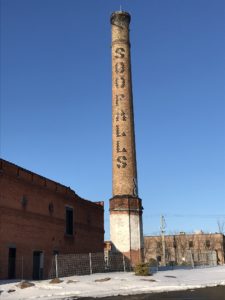 The people here represented all that we should be proud of as Canadians, and I don’t only mean that they can handle winter well. They cared passionately about a variety of issues from indigenous rights to supporting at risk youth to helping single parents. There were people who started arts clubs, founded youth centres for underprivileged kids and studied why lack of ethnic food availability in small communities led to people moving away. These are all vital issues to fostering sustainable communities across Canada and especially in the cities and towns that are not the major centres where so often it seems more opportunities exist. Keeping vibrant young people in the Sault is important, especially now that the town’s main employer, the Steel plant, was bought by foreign owners.
The people here represented all that we should be proud of as Canadians, and I don’t only mean that they can handle winter well. They cared passionately about a variety of issues from indigenous rights to supporting at risk youth to helping single parents. There were people who started arts clubs, founded youth centres for underprivileged kids and studied why lack of ethnic food availability in small communities led to people moving away. These are all vital issues to fostering sustainable communities across Canada and especially in the cities and towns that are not the major centres where so often it seems more opportunities exist. Keeping vibrant young people in the Sault is important, especially now that the town’s main employer, the Steel plant, was bought by foreign owners.
My talk on leadership and the 10 leadership lessons that I’ve learned through my career and expeditions reinforced things this group of Algoma University students were already doing, a reminder that they were on the right course and should keep going strong. It was a wonderful example of how I was just as inspired by their accomplishments and tenacity as they were by mine.
So thank you Algoma University for showing me so eloquently what you are all about, and although this was my first time to the Sault, it won’t be my last. Not only because of the natural beauty, inspiring people and friendly locals, but thanks to organizers Karen and Jillian I know the best spot on Lake Superior to canoe. So next time I’m in the Sault, you can find me at Bathtub Island, it just might not be in the winter.

